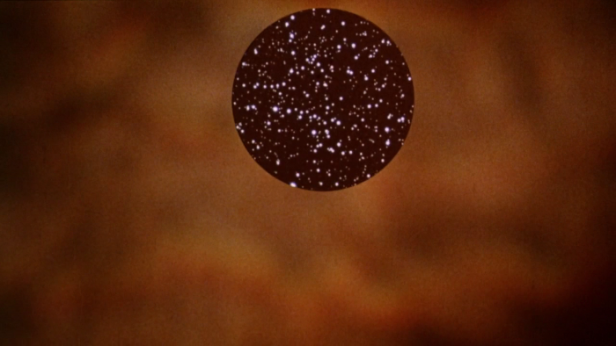In the 1960s, former boxer George Walker, having retired from the ring, made a move into various business ventures including shares in a London nightclub. In 1974 he bought the Hackney and Hendon Greyhound Company and merged his various interests into a single company renamed Brent Walker. The company had many fingers in a variety of business pies, including the development of the huge Brent Cross shopping centre in north London. In 1978, Brent Walker branched out into film production and scored a huge international hit with its adaptation of Jackie Collins’ novel The Stud, which helped to relaunch the career of the novelist’s sister Joan. The company enjoyed further successes with a sequel, The Bitch (1979) and the film version of The Who’s concept album about a young mod in the early 1960s, Quadrophenia (1979). Amid these big hitters they became involved in a strange little science fiction film, shot on a tiny budget in the States, as an attempt to capitalise on the post-Close Encounters of the Third Kind (1977) fascination with all things UFO.
John Coats’ Foes was shot independently and first emerged, albeit very briefly, at a brisk 72 minutes. By the time it was being reviewed in British periodicals in summer of 1979 (Screen International in May and Monthly Film Bulletin in June) it had gained a few pounds, now running a less sprightly 90 minutes. It seems that Brent Walker were behind those extra minutes, and they were certainly the film’s British distributor but it’s unclear if they ever managed to get it into any actual British cinemas. It disappeared without trace shortly after the summer of 1979, never turning up on video or DVD or getting a television airing though a belated blu-ray release did finally happen in 2019. Which is just as well as although it leaves a lot to be desired, there’s much to enjoy in this thoughtful if sometimes creaky low-budget effort.

In Coat’s original film, there are only a handful of characters, and the entire action is set on or around a small island off the coast of California where a young couple, Paul (Alan Blanchard) and Diane (Jane Wiley), live in a lighthouse. Their humdrum lives are turned upside down when a saucer-shaped UFO turns up, at first simply hovering over the island, seemingly unconcerned with the couple who in turn aren’t all that bothered by its presence. But a USAF jet has already been shot down by the aliens who abduct locals, including Paul and Diane and eventually emerge as amorphous, shifting columns of light.
Its all very enigmatic, with a marvellously odd 2001: A Space Odyssey (1968) inspired finale in which the saucer flips on its side to reveal that its previously mirrored underside (a very nice effect) has become a portal “full of stars” as Dave Bowman exclaimed in 2010 (1984). It’s a weirdly transcendental moment that that leads to a satisfyingly ambiguous ending. It many have been a tad too enigmatic for some, hence the inclusion of a whole load of new material featuring a group of US air Force types – headed by Jerry Hardin, later conspiracy informant Deep Throat in The X Files (1993-2018), and the veteran Macdonald Carey) – fretting over how to deal with the incursion, growing increasingly concerned as their aircraft sent to investigate continue to disappear. In both versions, late in the day, a UFO researcher (played by Steven Schrader) turns up on the island and manages to shed absolutely no light on the subject at all.

Coats was a budding special effects man who clearly wanted to use Foes as a showreel for his talents (he went on to help provide effects for Wes Craven’s New Nightmare (1994), Tale of the Mummy (1998), Austin Powers: The Spy Who Shagged Me (1999) and the remake of Clash of the Titans (2010 among many others, though he never directed again) and he was assisted by future Industrial Light and Magic technician Scott Farrar and For the most part the film is technically very proficient. It was obviously shot on a shoestring, but the effects are reasonably good, the UFO gliding with eerie precision around the island, the true motives of its occupants never revealed even at the end. They simply turn up, act in alien ways and then seemingly depart. The mirrored UFO is a nice touch, and the aliens are more enigmatic than in any other Close Encounters knock off.
The pacing and characters are more of a challenge. The flat reactions of the young couple to the arrival of the UFO (they seem remarkably calm about it suddenly showing up literally in their back yard) was likely down to the actors inexperience. Foes would be Wiley’s only film and Blanchard’s only other known screen appearance was as the lead in Stephen Traxler’s toxic monster film Spawn of the Slithis (1977). The pace may be too stately for some tastes, though it all works better in the shorter “director’s cut” – without the intrusive cutaways to the military brass standing around on a very obvious set, it plays with a more dreamlike and melancholy atmosphere to good effect.

If you’re looking for a new lost cause to champion, Foes might not quite fit the bill. It’s certainly fascinating and its re-emergence from the dark is cause for some celebration, but its flaws might prove too hard for all but the most forgiving to overlook. But it is a lot better than a film which has languished in virtual obscurity for decades might suggest. It’s worth seeing for its foreboding atmosphere and the impressiveness of the visual effects (impressive in that late 1970s, shot on a budget kind of way) and the “director’s cut” is the preferred version. The Garagehouse blu-ray contains both cuts and a Coats commentary and should be the first port of call for anyone looking to explore a flawed but undeniably interesting and always strangely entertaining film.